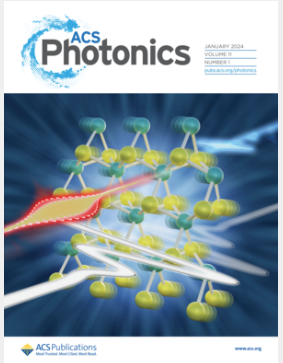Broadband Bidirectional Thermal Emission Supported by Localized Surface Plasmons and Magnetic Polaritons
IF 6.5
1区 物理与天体物理
Q1 MATERIALS SCIENCE, MULTIDISCIPLINARY
引用次数: 0
Abstract
Achieving broadband directive (BBD) thermal emission is of fundamental importance for high-performance thermal antennas, stealth, and energy harvesting. However, previous BBD emitters lack consideration of azimuth dependence, and the waveband is limited. Herein, we design a metal–insulator–insulator–metal (MIIM) thermal emitter for achieving polar-azimuthal selective emission within the 8–14 μm atmospheric window, namely, broadband bidirectional thermal emission. The proposed MIIM structure consists of aluminum (Al) stripes on the top, beneath aluminum oxide (Al2O3) and silicon oxide (SiO) films, and an Al substrate. We explicitly present the design procedure of the MIIM structure to achieve broadband bidirectional emission and reveal the underlying mechanisms. Results indicate that the intrinsic absorption of the dielectric layers, localized surface plasmons (LSPs), and magnetic polaritons (MPs) synergistically promote the broadband bidirectional emission of the MIIM structure, resulting in bidirectional thermal emission within two well-constrained solid angles with marginal angular dispersion. This work reports a high-performance broadband bidirectional emitter and provides new insights into controlling polar-azimuth emissivity through the superposition and coupling effects of LSPs and MPs, with potential applications in thermal imaging and camouflage.

求助全文
约1分钟内获得全文
求助全文
来源期刊

ACS Photonics
NANOSCIENCE & NANOTECHNOLOGY-MATERIALS SCIENCE, MULTIDISCIPLINARY
CiteScore
11.90
自引率
5.70%
发文量
438
审稿时长
2.3 months
期刊介绍:
Published as soon as accepted and summarized in monthly issues, ACS Photonics will publish Research Articles, Letters, Perspectives, and Reviews, to encompass the full scope of published research in this field.
 求助内容:
求助内容: 应助结果提醒方式:
应助结果提醒方式:


